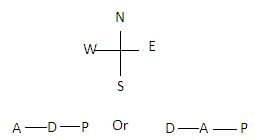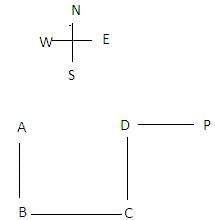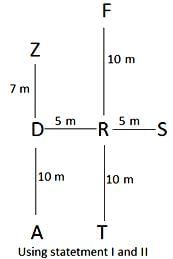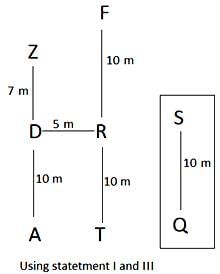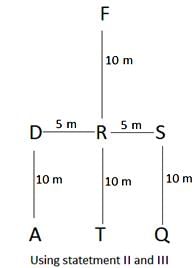12 Minute Test: Data Sufficiency | Logical Reasoning (LR) and Data Interpretation (DI) - CAT PDF Download
The CAT exam demands quick thinking and efficient time management. By practising with this focused test, you’ll build the skills needed to tackle similar questions on the actual exam, boosting your confidence and performance.
Benchmarking Performance
This test contains 6 data sufficiency questions. Aim to spend no more than 2 minutes per question.
If you complete each question within 2 minutes: You’re meeting the baseline for a strong performance. Now, aim to reduce your time to 1.5 minutes per question to excel further.
If you exceed 2 minutes per question: Focus on identifying gaps (e.g., unnecessary calculations, misinterpreting statements).
Only after thorough self-effort should you review solutions to pinpoint what you missed, ensuring maximum learning and preparation for the CAT’s demanding QA section. Good luck!
Directions for Questions 1-2: Data Sufficiency problems consist of a question followed by two statements numbered I and II given below it. Read the statements carefully and decide which of them is/are sufficient/necessary to answer the question.
Mark your answer as
(a) if the data in statement I alone is sufficient to answer the question, while the data in statement II alone is not sufficient to answer the question
(b) if the data in statement II alone is sufficient to answer the question, while the data in statement I alone is not sufficient to answer the question
(c) if the data in either of the statements alone is sufficient to answer the question
(d) if the data in both statements I and II together is not sufficient to answer the question
(e) if the data in both statements I and II together is necessary to answer the question
Q1: What is the direction of A with respect to D?
I. A is to the north of B, which is to the west of C, which is to the south of D.
II. D is to the west of P, which is to the east of A.
(a) a
(b) b
(c) c
(d) e
Ans: d
Sol: From statement I alone, we cannot figure out the position of A with respect to D, as D could be to the north-east, south-east, or east of A.
So, I alone is not sufficient.
From II alone, we cannot figure out the direction of A with respect to D since A could be to the east or west of D.
So II alone is not sufficient.
From I and II together, we can figure out the direction of A with respect to D.
So, both I and II are sufficient to answer the question.
Q2: In a test, P, Q, R, S and T obtained different scores - 10, 14, 16, 15, 20. The average score of all 5 persons is equal to the score of R alone. Which person obtained the highest score?
I. Sum of scores of S and T is 30 and that of Q and P is 30.
II. P scored more than T and sum of scores of Q and S is 24.
(a) Statement I is sufficient
(b) Statement II is sufficient
(c) Neither of the statement is sufficient
(d) Both statements are required to answer the question
Ans: b
Sol: Average score of all 5 = 75 ÷ 5 = 15, which is the score of R.
So, score of R is 15.
Now, from I alone, we know that sum of scores of S and T is 30 and that of Q and P is 30. So, S and T or Q and P could have scores of 14 and 16 or 10 and 20 or vice-versa.
Thus, no definite conclusion is drawn.
Thus, statement I alone isn't enough.
From II alone, sum of scores of Q and S is 24 and only combination that is possible is 10 and 14. thus 16 and 20 are scores of P and T. Since P scored more than T, thus score of P is 20, which is the highest among of the group.
Thus, statement II alone is sufficient to answer the question, but statement I alone is not sufficient to answer the question.
Directions for Questions 3-4: The following problem consists of a question and three statements (I), (II) and (III) given below it. You have to find out which of the statements is/are redundant for determining the answer to the given question or can be dispensed with.
A, B, C, D, E, F and G are sitting on a single bench facing North. C is second to the left of A. C is not the immediate neighbour of E.
Q3: Who is sitting exactly in the middle?
I. G is second to the left of F, who is not an immediate neighbour of C.
II. E is the immediate neighbour of A.
III. B is the immediate neighbour of G and F.
(a) Only statements I and II
(b) Only statements II and III
(c) Only statement II
(d) Only statement III
Ans: d
Sol:
Using statements I and III, we cannot make particular arrangement as there are many possibilities.
Using statements I and II, we can determine who is sitting in the middle.
It means we can find answer using I and II, so statement III is redundant.
Q4: What is the position of T with respect to S?
I. Z is 7 m to the North of D. T is 10 m to the South of R.
II. S is 5 m to the East of R, who is 10 m to the South of F.
III. F is 20 m to the North of T. S is 10 m to the North of Q.
(a) Only statements I and II
(b) Only statement II and either I or III
(c) Only statement III and either I or II
(d) Only statements II and III
Ans: b
Sol: We can answer the question using statement II and either I or III.
Question 5: How many children does M have?
Statements:
I. H is the only daughter of X, who is the wife of M.
II. K and J are brothers of M.
Ans: D
Solution:
- Statement I: H is the only daughter of X, who is the wife of M. This means M has at least one child (H, the daughter). Therefore, this statement alone is sufficient to answer that M has one child.
- Statement II: K and J are brothers of M. This information provides no direct insight into how many children M has, as it talks about M's brothers, not M's children. Therefore, this statement alone is not sufficient to answer the question.
Hence, Statement I alone is sufficient, while Statement II alone is not sufficient to answer the question.
Question 6: The last Sunday of March 2006 fell on which date?
Statements:
I. The first Sunday of that month fell on the 5th.
II. The last day of that month was Friday.
Ans: CSolution:From I, we conclude that 5th, 12th, 19th and 26th of March, 2006 were Sundays.
So, the last Sunday fell on 26th.
From II, we conclude that 31st March, 2006 was Friday. Thus, 26th March, 2006 was the last Sunday of the month.
So Option C is correct
|
87 videos|166 docs|99 tests
|
FAQs on 12 Minute Test: Data Sufficiency - Logical Reasoning (LR) and Data Interpretation (DI) - CAT
| 1. What is a Data Sufficiency CAT? |  |
| 2. How long does the Data Sufficiency CAT test take? |  |
| 3. What skills are tested in the Data Sufficiency CAT? |  |
| 4. Can I use a calculator during the Data Sufficiency CAT? |  |
| 5. How can I prepare for the Data Sufficiency CAT? |  |



